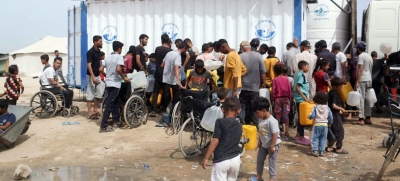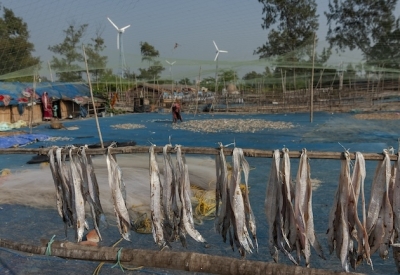CAIRO, Sep 20 (IPS) — The population of Egypt increased from 104 million in November 2022 to 105 million in June 2023, according to the Central Agency for Public Mobilization and Statistics (CAPMAS). This represents the growth rate for the country, where the poverty rate is 27.3 percent. The population increase means that every 245 days, it increases by one million, or 3 people per minute.
The population density in Egypt has also increased, from 100.1 people per square kilometer (km2) in 2020 to 104.2 people per km2 in 2023. Cairo is the most populous Governorate in Egypt, with over 10 million residents, followed by Giza, with 9.5 million residents.
The fertility rate in Egypt has been declining in recent years, from 3.5 births per woman in 2014 to 2.85 births per woman in 2021. However, the annual birth rate is still high, at around 2.2 million.
If current fertility rates remain stable, Egypt’s population will reach 119 million in 2030 and 165 million in 2050. However, if fertility rates fall to 1.6 children per woman by 2042, the population will reach 117 million in 2030 and 139 million in 2050, Dr Najwa Samak, former head of the economics department at Cairo University, told IPS.
Samak stressed that the rapid population growth in Egypt is a burden on the national economy and a major challenge to the state’s development efforts. She called for concerted efforts from all sectors of society, including civil society organizations, the media, and state agencies, to control the population growth rate.
She said that the human element is one of the most important factors in production for any country and that population growth can be a blessing if it is used to raise production rates and national income. However, in the case of Egypt, the rate of population growth is outpacing the rate of economic growth, putting a strain on the country’s resources.
Samak said that family planning is crucial but that the Chinese model of one-child families is not the answer. She said that this model can lead to psychological damage for families and children.
She said that the most important thing now is to invest in eliminating illiteracy and improving the standard of living for poor families. This will help to raise awareness of the challenges of population growth and make it possible for families to make informed choices about their reproductive health.
Dr Hussein Abdelaziz, a professor of statistics at Cairo University, said that the Egyptian government aims to reduce the fertility rate from 2.8 to 1.6 children per woman in the coming years. He said that uncontrolled population growth is a major challenge to the state’s development efforts and drains the country’s resources.
Abdulaziz told IPS that the illiteracy of women is one of the main reasons for the high fertility rate in Egypt. He said that there are some villages in Egypt where the illiteracy rate for girls is up to 50%. He called for the empowerment of women through education to address the problem of population growth.
Despite the challenges, Abdelaziz finds hope in a number of governorates that have achieved positive indicators of population growth. He cited Port Said and Alexandria, where the fertility rates are 1.8 and 2.1 children per woman, respectively. These rates are equivalent to the reproductive rates in developed countries.
Abdulaziz said that the Egyptian government is working to reduce the fertility rate by providing family planning services, improving access to education, and raising awareness of the challenges of population growth.
IPS UN Bureau Report






